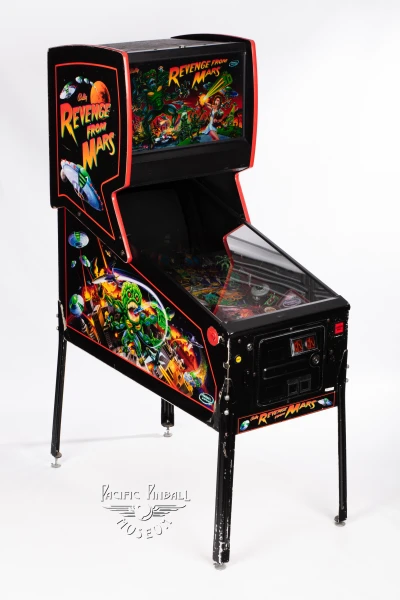Revenge From Mars
Revenge From Mars Preview Image

Machine Details
Manufacturer
n/a
Year
n/a
Technology Era
n/a
Machine Description
Content Under Review
Help us improve this content
Your support accelerates our content verification efforts.
Support Our WorkRevenge From Mars (1999) represents a groundbreaking moment in pinball history as one of only two machines to feature Williams' innovative Pinball 2000 platform. This technological marvel combined traditional pinball mechanics with computer-generated holographic imagery projected onto the playfield, creating an unprecedented mixed-reality gaming experience.
The game served as a sequel to Williams' 1995 hit 'Attack from Mars' and was designed by George Gomez with Pat Lawlor serving as lead designer on the Pinball 2000 platform. The machine's unique hardware setup used a mirror and CRT monitor system to overlay virtual targets and animations onto the physical playfield, allowing players to shoot at seemingly three-dimensional Martians. The gameplay revolves around defending Earth from a second Martian invasion, featuring multiple mission modes, interactive holographic targets, and innovative scoring mechanics.
Despite its technological innovation and positive player reception, Revenge From Mars would ultimately become one of Williams' final pinball machines. Only about 6,878 units were manufactured before Williams (then part of WMS Industries) made the difficult decision to exit the pinball business entirely in October 1999. While the Pinball 2000 platform showed promise, changing market conditions and manufacturing costs led to the end of Williams' pinball division.
The machine remains highly regarded in the pinball community for its ambitious fusion of video game elements with traditional pinball mechanics. It stands as a testament to Williams' willingness to innovate in their final years and represents a fascinating 'what-if' moment in pinball history. Today, Revenge From Mars is considered a collectible piece, particularly given its historical significance as one of the last machines produced by Williams and its unique technological features.